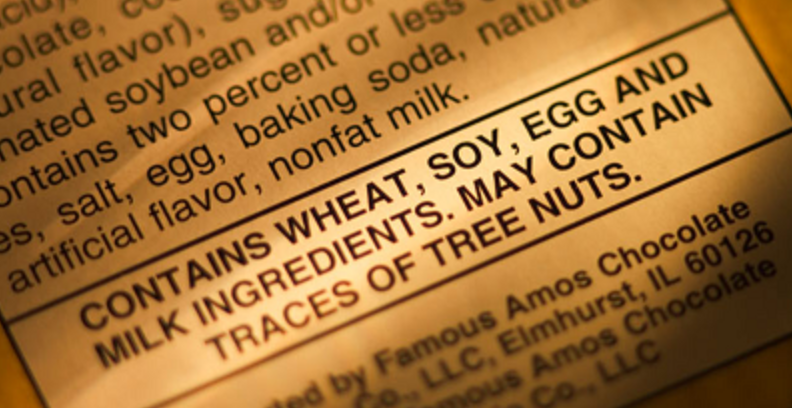The 14 most common allergens
In the UK, there are 14 food allergens that are recognised as the most common ingredients that cause food allergies and intolerances:
- Cereals containing gluten (such as wheat, rye, barley and oats)
- Eggs
- Milk
- Fish
- Crustaceans (such as prawns, shrimp, crab, crayfish and lobsters)
- Molluscs (such as oysters, muscles, squid and octopus)
- Lupin
- Celery
- Mustard
- Sesame
- Soybeans
- Peanuts
- Tree Nuts (such as almonds, pistachios, hazelnuts, brazil nuts, cashews, pecans and macadamia)
- Sulphur Dioxide & Sulphites (if the sulphur dioxide and sulphites are at a concentration of more than ten parts per million)
Labelling of Allergens on Food Packaging
In October 2021 ‘Natasha’s Law‘ was enacted after Natasha Ednan-Laperouse suffered anaphylaxis and subsequently died after eating sesame in a baguette, purchased from Pret A Manger in Heathrow airport.
The new law now require businesses to label all food that is pre-packed for direct sale (known as PPDS) with a full list of ingredients and the 14 allergens (if present) emphasised in bold.
Restaurants do not currently need to label allergens in menu’s, but they must be able to provide this information to customers if they ask for it and advise if the food is safe for them to eat.

Better Allergy Information in Restaurants
‘Owens Law‘ are campaigning for better allergy information in restaurants. Owen died from anaphylaxis after eating a plain grilled chicken burger at a Byron Burger restaurant. He had been assured it was safe for him to eat when it had actually been marinated in buttermilk, which he was highly allergic to. The new law calls for all allergens to be labelled clearly on menu’s so there can be no doubt of the ingredients when ordering.
I am fully supportive of this campaign as my son has had a few reactions in restaurants (some severe) after being told the food is safe for him to eat. There is no guarantee that waiting staff understand fully the ingredients in food ordered and even if they speak to the chef, information may not be relayed inaccurately.
Cross Contamination
All food businesses should take precautions to avoid cross-contamination when preparing food. It never hurts to ask if they are actually taking the relevant steps when ordering food. Cooking oil is one that is very often missed in my experience and find that restaurants that have a separate frier for chips/fries is often a good sign that they are taking cross contamination seriously.
Some of the steps that food businesses should be following are –
1) Cleaning the area prior to the food being prepared.
2) Cleaning utensils before each usage, especially if they were used to prepare meals containing allergens.
3) Washing hands thoroughly between preparing dishes.
4) Keeping ingredients that contain allergens separate from other ingredients.
5) Ensure the same oil isn’t used that has been used to cook food with allergens prior (such as fish or batter).

